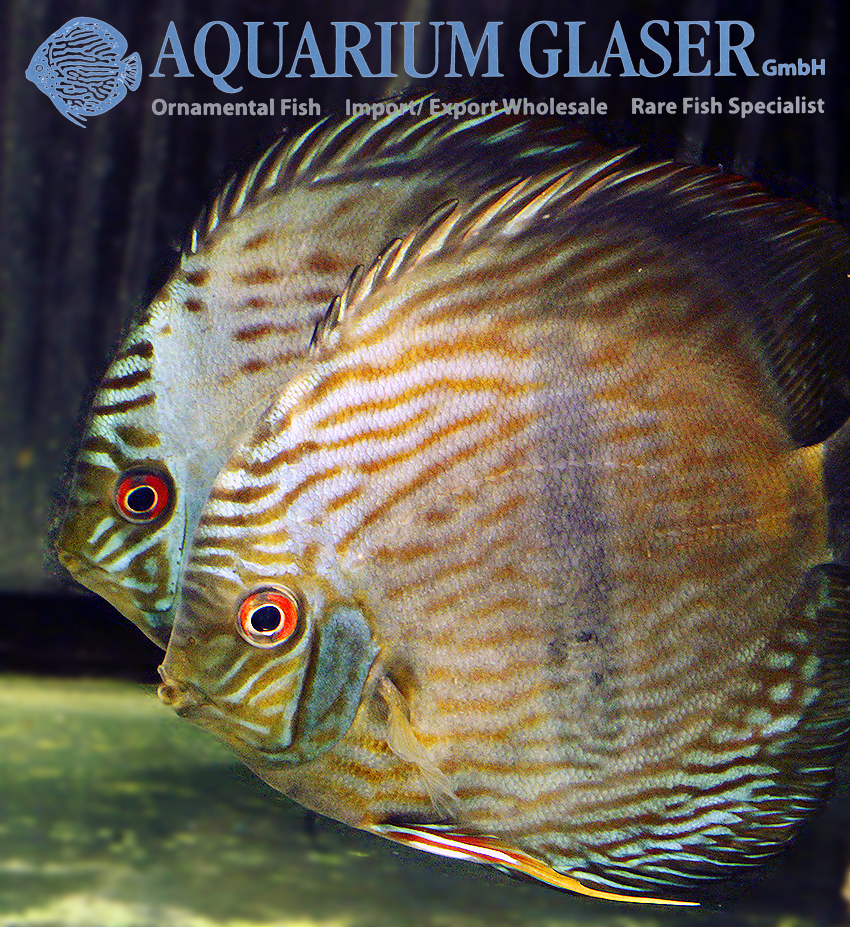

Symphysodon discus skin#
Removal of the pituitary was subsequently shown to reduce the mucous cells in the skin of Betta splendens, again associated with impaired ability to tolerate freshwater ( Schreibman and Kallman, 1965), and prolactin was shown to cause proliferation of mucous cells in the skin of certain intact cichlids ( Blüm and Fiedler, 1965).

heteroclitus were reduced by hypophysectomy, a change which he suggested might be correlated with the inability of the operated fish to live in freshwater ( Section I, B). Burden (1956) showed that the activity and number of mucous cells in the gills of F. Prolactin and Epidermal Mucous Cells in TeleostsĮvidence is accumulating that suggests the possibility that fish prolactin might maintain the epidermal mucous cells in at least some teleosts. PRL has a rather conserved role in fluid and electrolyte balance and feeding in vertebrates, so it is not surprising that PRL plays a role in body fluid (mucus) production. In most fish species mucus production is associated with osmoregulation, but discus fish actually secrete a nutrient-rich mucus on which the fry feed, analogous to crop milk production in ring doves and lactation in female mammals ( Whittington and Wilson, 2013). One of the more interesting functions of PRL is its role in increasing epidermal mucus-producing cells in discus fish. However, there appears to be a strict dose-dependent response to PRL in cichlids such that only the middle range of tested doses is effective, so it is difficult to say whether this is a species difference or an artifact of the study design ( Buntin, 2010). Unexpectedly, increasing PRL did not stimulate parental behavior in male breeders and immature helpers in the cooperatively breeding daffodil cichlid ( Neolamprologus pulcher). Inhibiting PRL also reduced nest guarding and defense in male bluegills. Inhibiting PRL decreased fanning behavior in female convict cichlid ( Amatitlania nigrofasciata), male bluegills, and pumpkinseed sunfish ( Buntin, 2010 Whittington and Wilson, 2013). Injections of PRL have been shown to induce fanning behavior in male three-spined sticklebacks, Mediterranean wrasse ( Symphodus ocellatus), male and female angelfish ( Pterophyllum scalare), and brown discus fish ( Symphysodon haraldi). PRL has been implicated in pit-digging behavior (sweeping pits in the substrate to corral and protect the young) in blue acara ( Andinoacara pulcher) and can induce ‘calling movements’ which are used when guarding school fry in jewel fish ( Hemichromis bimaculatus Whittington and Wilson, 2013). Relative to other peptide hormones, prolactin (PRL) has been rather well-studied in fish and appears to play a role in many different aspects of fish parental care. Smiley, in Encyclopedia of Animal Behavior (Second Edition), 2019 Prolactin


 0 kommentar(er)
0 kommentar(er)
